Solar power: sun, STEM & stimulating cost savings
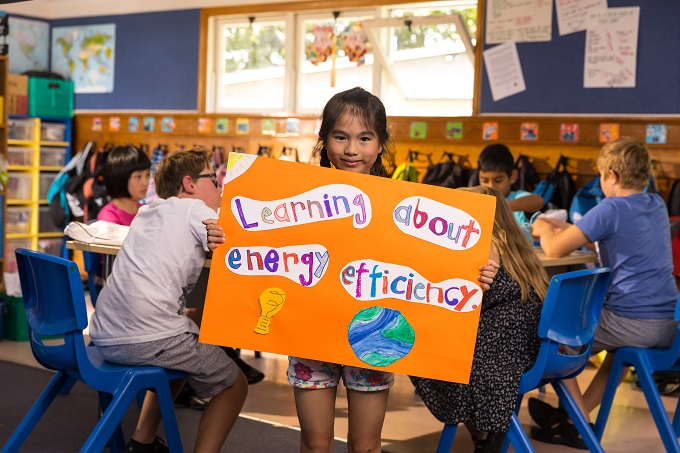
The dream of a completely self-sufficient solar powered school has not been realised quite yet but the savings can be electrifying.
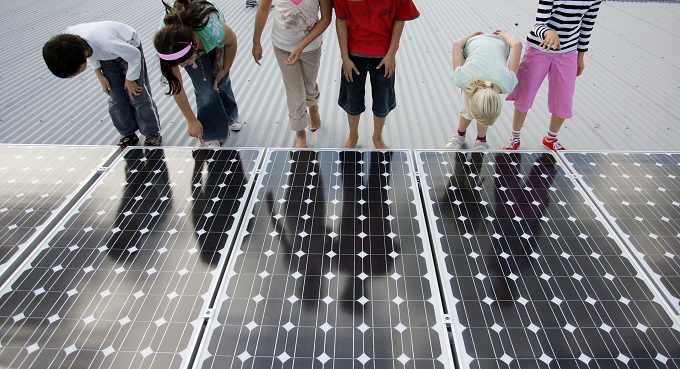
While solar solutions are increasingly providing schools with reduced energy costs and, in some cases, revenue streams, most schools can’t afford the upfront cost to install enough solar to power an entire campus. However, the price of a solar panel has decreased over time as the technology has become more popular and more efficient.
This article originally appeared in our Term 1 magazine. Click here to read the full version!
Pricing options are also available so that schools no longer have to buy panels upfront but can enter into a ‘rent to buy’ style agreement, called a Power Purchase Agreement where schools pay slightly higher operational costs so that after a contracted period of time they can assume ownership instead. Maintenance and repairs are the responsibility of the system owner. A PPA generally means low or zero upfront costs, but higher operational costs for a school.
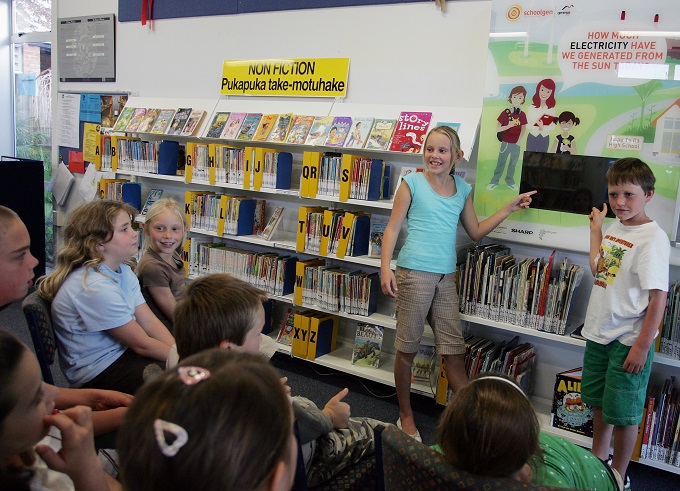
There have also been a few notable examples of extensive solar in schools grabbing headlines. In 2017, Bangalore’s Canadian International School became the first school in India to operate 100 percent on solar power.
A little closer to home, in October last year, new-build Perth primary and secondary school, Atlantis Beach Baptist College became Australia’s first fully solar powered school. The college runs on 20kW of rooftop PV and 30kWh of battery storage, with solar heat pumps servicing hot water across campus.
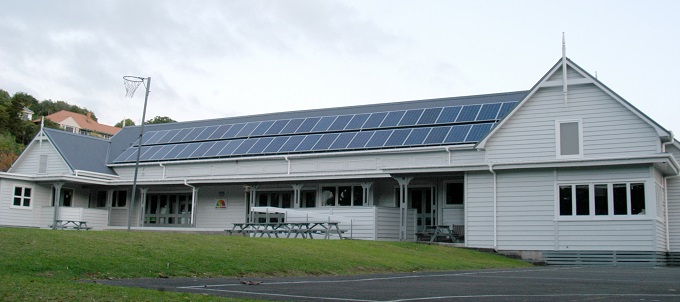
New Zealand is also making a conscious effort to increase solar power in schools. Last year, Pukeatua School in Wainuiomata made headlines when it saved $1400 in 12 months thanks to new solar panels. Principal Jenni Adam told Stuff that the savings were used to invest in filament for donated 3D printers. The savings came from a reduced need to purchase power from the grid. Any extra power that’s generated by the solar panels, for instance over the school holidays or on weekends, is also sold back to the power grid.
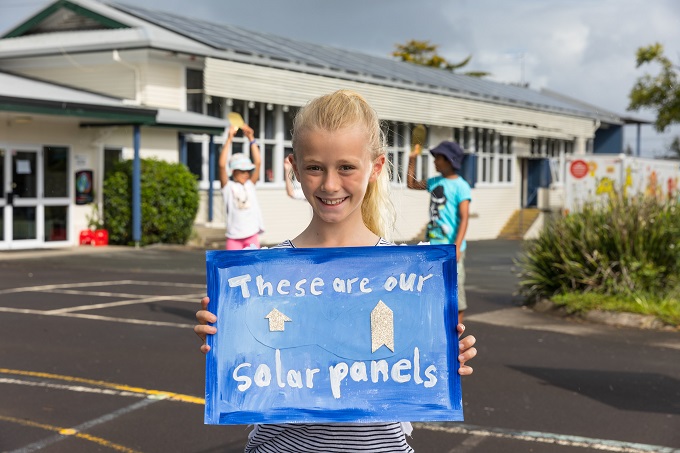
This is one of the key incentives for solar energy: generating savings for schools to put to much-needed use. Still, upfront costs (or running costs in the case of schools in a PPA) are still a concern for many.
For Pukeatua School in particular, solar panels were donated thanks to Hutt City Council’s Solar in Schools project, which targeted low decile primary schools. It is worth enquiring about local grants that may be available to your school and enquiring with local businesses as you explore other fundraising avenues. The benefit of fundraising for a solar installation at your school is that it will provide financial return on investment, which schools can use to fund other projects.
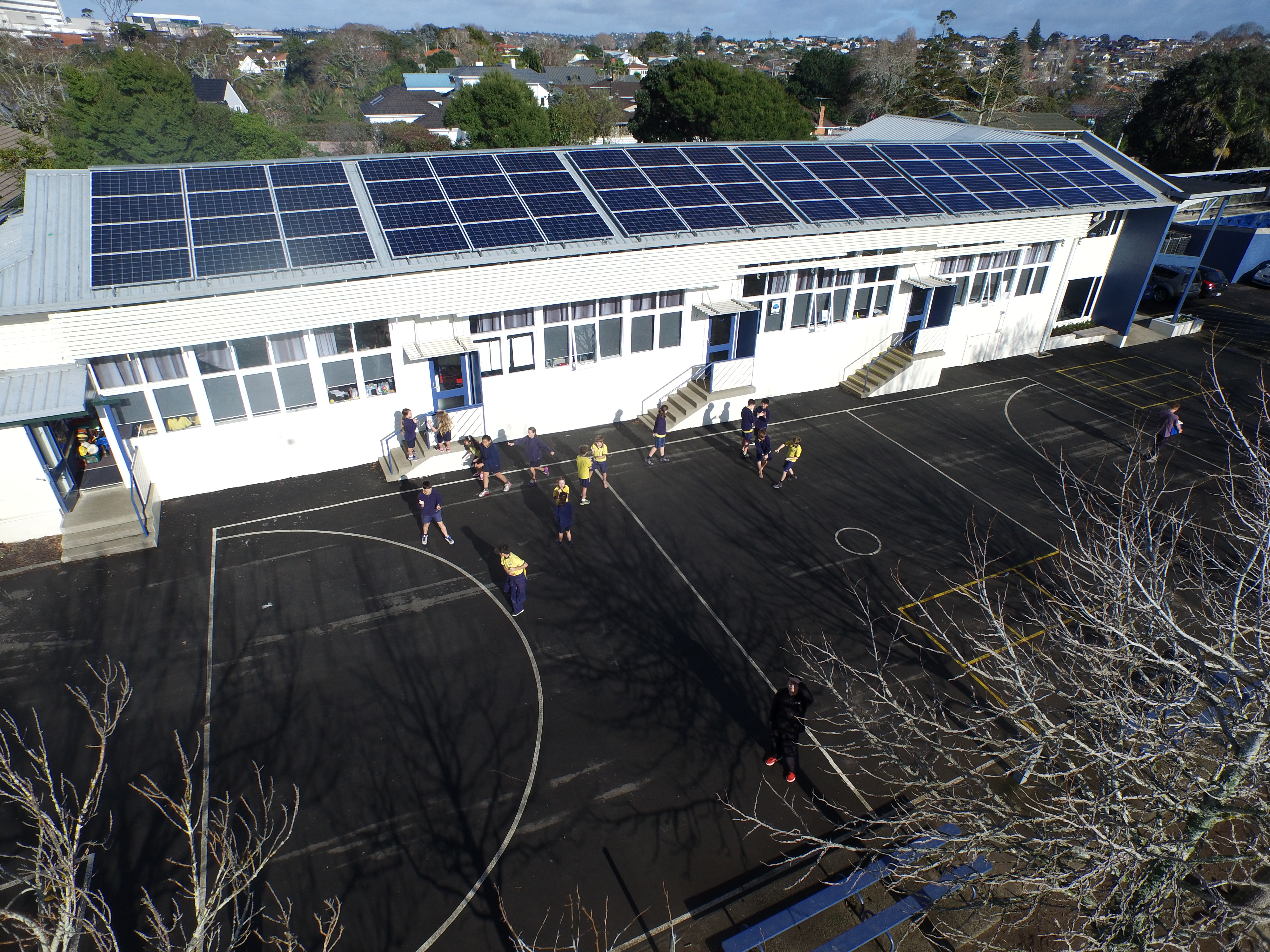
School News spoke with a couple of leaders in the solar sector to find out what’s new and available for schools in 2019.
Industry insights and strategies
Jessica Rodger from Genesis School-gen explains how the data created by an in-house solar setup can be used by teachers and students in STEM education.
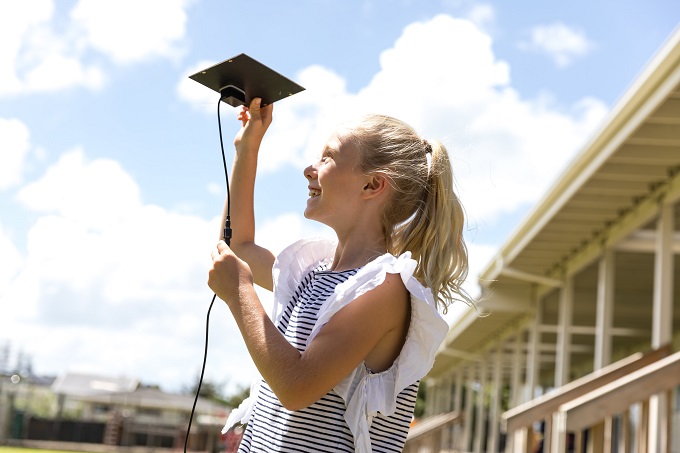
“There is a great deal that can be learned from the solar data – and about solar as a renewable energy source – that is extremely useful for STEM education. We encourage all schools who install solar to track and monitor their solar data online (this is currently accessed by the 93 schools that are part of our programme) and to access the range of solar-related teacher resources we have, which are all curriculum aligned. Using the solar data to teach kids about maths, analysis, renewable energy and energy efficiency, is a great way of making STEM really hands on and practical.”
Maggie Twaddle, NZ Solar Schools programme manager at Power Technology reiterates the importance of solar data in STEM education: “Our graph of live solar data and ongoing development of education programmes for students about solar energy and energy efficiency is a key bonus of having a solar array on the roof of the school. It is also a great visual example of a percentage of the school’s electricity being produced from a renewable source right where the students can see it, use it and learn about it.”
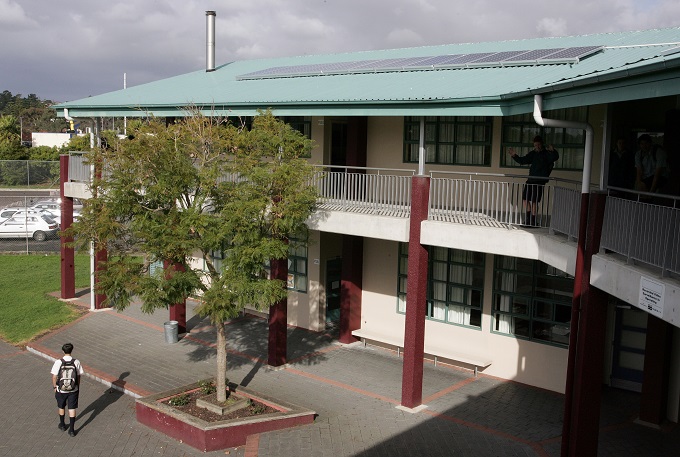
Where to start? Jessica and Maggie both agree that most schools go for a solar array that helps with their energy use but these are unlikely to generate enough energy to get them completely off-grid.
Maggie explains: “Schools are now installing larger solar arrays with five of the most recent schools installing more than 20 kW solar arrays. The percentage of the school’s electricity details are provided to the school in the initial proposal.
“The solar array will supply the first ‘chunk’ of electricity to the school when there is sunlight, wherever this is being used across the school. This offsets energy that would otherwise be imported from the national grid. The solar power system can be modular and can be increased at any time in future to meet growing needs or offset a greater proportion of the cost of retail energy.
“Batteries may be installed at a later date, as they become more economically viable. If schools want more electricity generated on the roof they can simply add another solar array.”
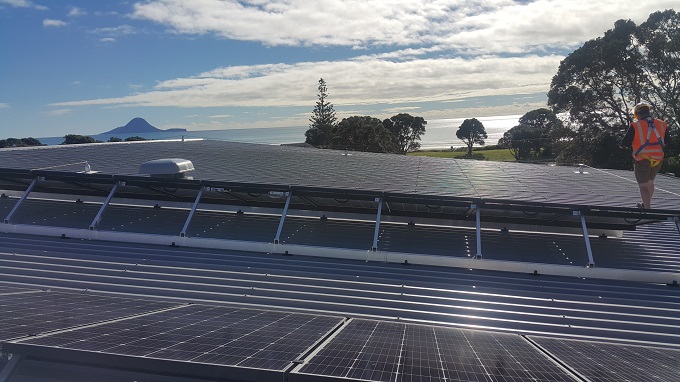
According to Jessica, “Schools are ideal users of solar power, since the majority of their energy use is during sunshine hours.
“There are a number of practical considerations that a school needs to take into account when thinking about installing solar, such as whether the building they want to put solar on is permanent, whether it has a north facing roof, and whether it is clean and in good condition.
“From there, they can request that their electricity retailer provide them with the school’s energy consumption figure for the past year, which will help determine what system size would ideally be required.
“Schools can go for a smaller system (anything less than a 5kw array is not recommended) as this will let the school monitor and learn from solar without making a massive dent in the budget. The other option is to get a larger array that will meet the majority of energy needs.
New technology on the rise
“Technology changes have focused on improving efficiencies of solar panels and inverters,” Jessica reveals. “As an example, in 2010 we were installing 150W panels now we install 300W+ panels. Costs of solar have also dropped significantly, making it more affordable for schools.”
Future-proofing schools for solar
“Solar panels do not emit anything,” Maggie says. “They are attached to the school roof and silently create electricity for the school with amazing guarantees. The best school buildings often have a north facing roof and every new school building should be future-proofed for solar.”
Solar seeks to future-proof students in other ways too, as Jessica elaborates: “Often we see schools who have installed solar using it as a way to drive energy efficiency initiatives – they can then see the impact of not only the lowering of their power bills from solar, but also greater awareness of energy use and genius reduction ideas coming from the kids, which all helps to drive lower power bills.
“It also helps broaden the understanding of sustainability as a whole, sparking ideas about other ‘green’ things the school could do – like planting their own veggies or fruit and improving their recycling habits.”
Case studies: Meet the schools ahead of the solar curve
School-gen powers STEM learning
Pupils at Ohope Beach School have brought STEM learning to life by comparing their school’s solar energy generation to 92 other schools through the Genesis School-gen website.
School-gen is Genesis Energy’s community programme that provides free science, engineering, technology and maths (STEM) resources and activities free to teachers from the School-gen website.
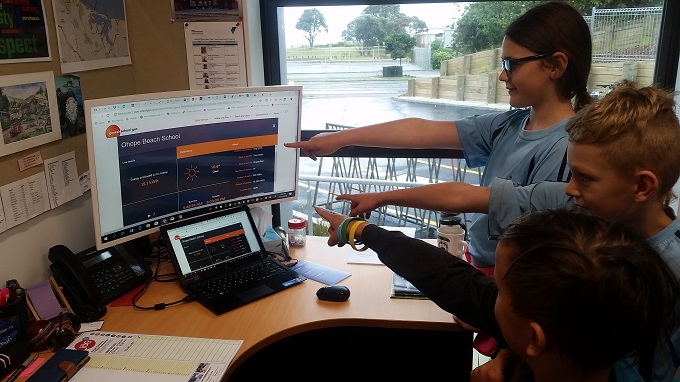
For School-gen schools with solar panels, Genesis also provides a device called a ‘Watt Watcher’ that allows students to monitor power generated from the school’s solar panels in real time.
Principal Tony Horsfall says that students at Ohope Beach School love to compare their solar generation to other schools, from Russell to Timaru, through the School-gen website.
“I’m sure the students will also gain a greater appreciation for our sunny climate as they learn,” says Tony.
Tony says he was eager to join the School-gen programme as his students have a keen interest in how energy is produced and used.
“Using the Watt Watcher, pupils can now see in real time how much solar energy is being generated from their panels, what the ultra-violet and weather readings are like, and what time the sun will rise and set,” said Tony Horsfall.
Schools, especially in sunny places like Ohope, are perfectly placed to get the most out of solar, given they use most of their energy during the day.
Students and teachers can also track the school’s solar power over time, and access free resources about energy generation through the School-gen website.
Ohope Beach School joins local schools James Street School and Whakatane Intermediate as School-gen solar schools, which Tony Horsfall says will mean students will be familiar with solar energy as they progress from primary through intermediate school level.
Schools that do not have solar panels can still use the resources on the School-gen website. Principals and Boards of Trustees can also use the website to see how other schools are benefiting when considering if they want to invest in a solar array.
Genesis created the School-gen programme to inspire young people to engage in and enjoy STEM subjects. As they grow into adults, the students’ interest and expertise in STEM will be key to the success and innovation of New Zealand companies and utilities in the future.
Solar for schools is a smart choice for so many reasons.
A solar power system allows schools to generate, consume and trade their own locally generated energy. This reduces the cost of electrical energy for the schools, and it does so over the long term, for a fixed price.
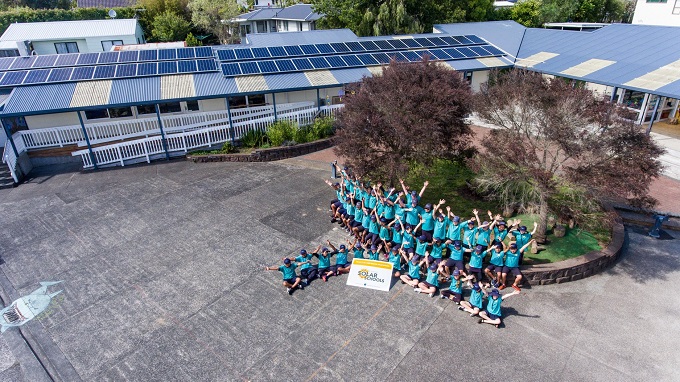
With the emergence of new platforms, such as Lemonade developed by Our Energy, which is a digital marketplace, schools can buy, sell and gift clean, local energy within their communities. Lemonade is applied within schools in partnership with Power Technology on their proprietary New Zealand Solar Schools programme, which empowers schools to more actively engage with their parent and student communities.
Two schools who have recently engaged with the programme are now generating their own solar energy and moving towards long term cost savings.
In January 2019, Henderson School implemented 68 solar panels to get 20.4 kWp of solar power that’s forecast to generate 27,023 kWh per annum or approximately 24 percent of the school’s overall energy consumption.
Henderson’s principal, Anthony Biddick said: “At Henderson Primary School our tamariki investigated how we can create a more sustainable learning environment. With assistance from Maggie at Power Technology Henderson Primary School students came up with a proposal that solar be installed at our kura.
“Their presentation to our board of trustees was very persuasive and we decided to accept the proposal. The team at Power Technology were efficient and professional and the installation process was hassle free for us. We look forward to many years of continuing to enhance tamariki learning by providing a sustainable learning environment.”
Commissioned in October 2018, Flanshaw Road School are now the proud owners of a 24.36kWp solar power generator. The system is installed on a single roof and generates an estimated 34,679 kWh per annum of renewable energy, for Flanshaw Road School that will deliver approximately 21.8 percent of the school’s overall energy consumption.
These schools can now expect a fixed price for all the energy delivered by their own solar power systems, so should energy costs increase in future, as is expected, these schools will increase their savings and reduce their operating costs. That frees up money for schools to pay for resources, not power.
In addition to the cost-savings and local, renewable and reliable energy from the sun, school students get the benefit of interactive learning about tomorrow’s energy sources today. By engaging our future leaders with resources, and their teachers with teaching aid support we ensure learning outcomes that shape their future.









